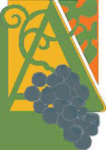Lummi Island Wine Tasting Summer Solstice Weekend ’14
We’re back!
 After a very long day of travel, we got home from France last night on the 11 o’clock boat, after driving from Aix-en-Provence to Marseille, flying from Marseille to Heathrow to Vancouver with a 4-hour wait in London, delays with baggage in Vancouver, and of course that eerie thing of spending nine hours in the air while the Sun moves eight of those hours with you. So you land just an hour after you take off, local time, which is, you know, always hard to get your head around cuz it’s so close to the local time when you took off all those hours ago!
After a very long day of travel, we got home from France last night on the 11 o’clock boat, after driving from Aix-en-Provence to Marseille, flying from Marseille to Heathrow to Vancouver with a 4-hour wait in London, delays with baggage in Vancouver, and of course that eerie thing of spending nine hours in the air while the Sun moves eight of those hours with you. So you land just an hour after you take off, local time, which is, you know, always hard to get your head around cuz it’s so close to the local time when you took off all those hours ago!
Rosé en Provence
 At some point you have to ask yourself: how is rosé made, anyway? Well, there are several methods, but the one most used en Provence probably accounts for most of the rosés you see on our shelves. Rosé is typically made from red grapes (i. e., that can alternatively be used to make red wine). The main difference is that when making rosé, the juice remains in contact with the skins for as little as a few hours, and at a relatively cool temperature, before separating it from the skins. The longer the contact time between the skins and the juice, the darker the color and the more red-wineish the wine becomes. So the very pale rosés one often finds in Provence usually mean that the contact time is very short, with the common goal of producing a wine that is aromatic, fresh, crisp (acidic), and refreshing. And pale!
At some point you have to ask yourself: how is rosé made, anyway? Well, there are several methods, but the one most used en Provence probably accounts for most of the rosés you see on our shelves. Rosé is typically made from red grapes (i. e., that can alternatively be used to make red wine). The main difference is that when making rosé, the juice remains in contact with the skins for as little as a few hours, and at a relatively cool temperature, before separating it from the skins. The longer the contact time between the skins and the juice, the darker the color and the more red-wineish the wine becomes. So the very pale rosés one often finds in Provence usually mean that the contact time is very short, with the common goal of producing a wine that is aromatic, fresh, crisp (acidic), and refreshing. And pale!
Commanderie de Bargemon
 Our last few days in France were spent at Aix-en-Provence, which is spitting distance from one of our best-known rosé producers, Commanderie de Bargemone, where we did squeeze in a brief visit. The land here is quite flat, and the fifty-odd hectares of grapes here translate into about 400k bottles, or in the ballpark of 33K cases. There we took a tour of the production facilities with owner Marina.
Our last few days in France were spent at Aix-en-Provence, which is spitting distance from one of our best-known rosé producers, Commanderie de Bargemone, where we did squeeze in a brief visit. The land here is quite flat, and the fifty-odd hectares of grapes here translate into about 400k bottles, or in the ballpark of 33K cases. There we took a tour of the production facilities with owner Marina.
This Week’s Tasting Notes
Anne Amie Amrita white ’13 Oregon $14
Palate-tickling blend of pinot blanc, viognier, and riesling; aromas of quince, Rainier cherry, and lemon; palate of strawberry, raspberry, and nectarine; good match for Asian spices.
Bargemone Provence Rose ’13 France $14
Pale pink. Bright, mineral-dusted aromas of pink grapefruit and dried red berries. Light-bodied and racy on the palate, offering tangy citrus and redcurrant flavors. Finishes brisk and dry, with good lingering spiciness and length.
Olivares Monastrell Altos de la Hoya ’11 Spain 91 pts $10
Black raspberry and cassis aromas, with spicy mineral and floral elements. Powerful dark fruit flavors with vanilla and cola nuances and juicy acidity. Impressively velvety wine, with very good finishing breadth and lingering spiciness.
Rio Madre Rioja ’12 Spain 91pts $10
Sexy, high-toned cherry and blackcurrant aromas with notes of Indian spices and fresh rose. Smooth and seamless in texture, offering intense black and blue fruit flavors that become spicier with air. A great value.
Les Aphillanthes Galets Plan de Dieu ’10 91pts $23
From 45-65 year old vines, 60% Grenache, 20% Syrah and 20% Mourvedre. It boasts stunning aromas of kirsch liqueur, licorice, camphor, tobacco leaf and underbrush. Spicy, peppery and loaded with fruit.
If you enjoyed this post, please consider to leave a comment or subscribe to the feed and get future articles delivered to your feed reader.

 2072 Granger Way
2072 Granger Way